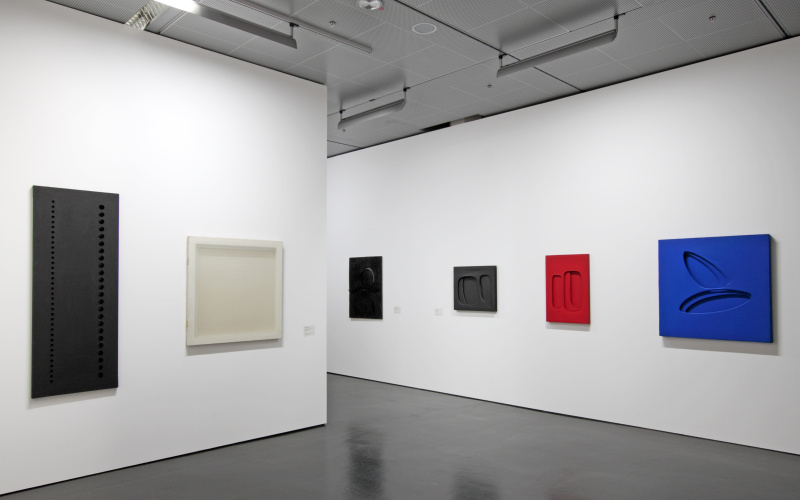- Event
- Opening
Rome – Open Painting
The Material Picture in Italy during the 1950s and 1960s
Fri, April 04, 2008 6:00 pm CEST
- Location
- Foyer
In the wake of the "material culture" of the Constructivists and the »poly materialism« of the Futurists a conception of image and painting had already developed in the 1920s, which refrained from the use of oil paints and canvas. In Italy, during the 1950s, an artistic dissolution and destruction of panel painting was initiated. One began separating panel from painting, a development which was to have far-reaching consequences for art history. A number of artists – ranging from Alberto Burri to Lucio Fontana – abandoned the path of abstraction. They distanced themselves from general tendencies, which predominated in the Abstract Express-
ionism of the New York scene during the 1950s. One not only rejected the portrayal of the object world but also the materials of painting, namely, of oil and canvas. The Italian avant-garde artists lacerated and perforated the canvas, curved it in space, pressed, layered or stretched it out. In these works there are no longer any pictures, but only the canvas itself. Based on this model, other artists such as Giuseppe Uncini, Agenore Fabbri or Paolo Scheggi, replaced the canvas by plastic sheeting, wood, metal, marble or concrete. From colors and pictures, one then took a step further to the material panels. This retreat to the material not only represented a radical and early "zero point" in painting, but also the beginning of material painting, which then freed the way to occupying the canvas with materials and objects foreign to art, as can be witnessed in the Nouveau Réalisme and Pop-Art of the 1960s, which followed. Robert Rauschenberg (see his "Combine Paintings") and others, who resided in Rome as art scholars during the 1950s, took up this impulse and transported it to America.
The majority of the exhibited works come from the collection of the VAF Foundation, which houses the most important collection of Italian modernity and is a partner of the ZKM | Museum for Contemporary Art. Further works from public museums and private collections extend the spectrum of the exhibited works.
ionism of the New York scene during the 1950s. One not only rejected the portrayal of the object world but also the materials of painting, namely, of oil and canvas. The Italian avant-garde artists lacerated and perforated the canvas, curved it in space, pressed, layered or stretched it out. In these works there are no longer any pictures, but only the canvas itself. Based on this model, other artists such as Giuseppe Uncini, Agenore Fabbri or Paolo Scheggi, replaced the canvas by plastic sheeting, wood, metal, marble or concrete. From colors and pictures, one then took a step further to the material panels. This retreat to the material not only represented a radical and early "zero point" in painting, but also the beginning of material painting, which then freed the way to occupying the canvas with materials and objects foreign to art, as can be witnessed in the Nouveau Réalisme and Pop-Art of the 1960s, which followed. Robert Rauschenberg (see his "Combine Paintings") and others, who resided in Rome as art scholars during the 1950s, took up this impulse and transported it to America.
The majority of the exhibited works come from the collection of the VAF Foundation, which houses the most important collection of Italian modernity and is a partner of the ZKM | Museum for Contemporary Art. Further works from public museums and private collections extend the spectrum of the exhibited works.
Imprint
- Curator
Team
Andreas F. Beitin (project management)
Organizing Organization / Institution
ZKM
This Event - Is part of
Accompanying program
